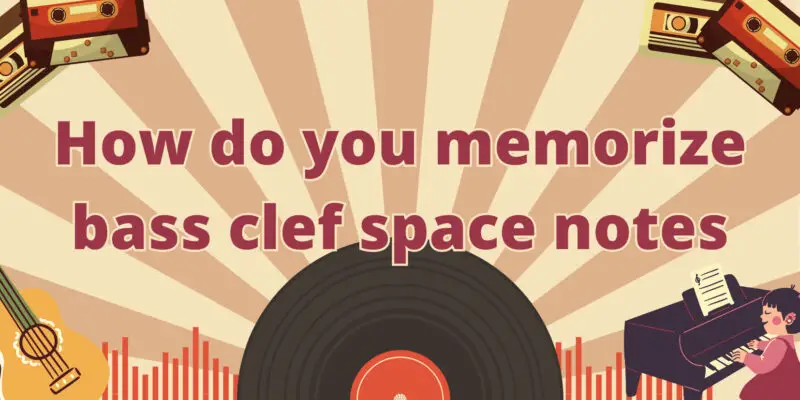Learning to read sheet music is an essential skill for any musician, and understanding the bass clef is crucial for those who play instruments such as the piano, bass guitar, or double bass. While the treble clef is more commonly known, the bass clef holds a unique set of notes that can be challenging to memorize. In this article, we’ll explore some effective techniques to help you memorize bass clef space notes with ease.
- The Basics of the Bass Clef: Before diving into memorization techniques, it’s essential to understand the basics of the bass clef. The bass clef, also known as the F clef, indicates the lower pitches on the musical staff. The notes on the lines and spaces of the bass clef staff represent different pitches in music.
- Acronyms: One of the most popular methods for memorizing bass clef space notes is using acronyms. Acronyms are memorable phrases or words created from the first letter of each note. For the bass clef spaces, you can use the acronym “All Cows Eat Grass” to remember the notes from bottom to top: A, C, E, and G.
- Visual Aids: Visual aids can be incredibly helpful when learning to read music. Drawing or printing out a bass clef staff and labeling the space notes can reinforce your memory. Visualizing the notes on the staff can make it easier to recall them when you’re playing music.
- Repetition: Repetition is key to memorization. Practice reading and identifying bass clef space notes regularly. You can do this by working through exercises, playing simple melodies, or even playing scales that use the bass clef. The more you expose yourself to these notes, the easier they will become to remember.
- Mnemonics: Mnemonics are memory aids that use associations to remember information. You can create your mnemonics to remember the bass clef space notes. For example, you might associate the note A with “Alligators,” C with “Cat,” E with “Elephant,” and G with “Giraffe.” These imaginative associations can help you recall the notes quickly.
- Interactive Apps and Games: In today’s digital age, there are numerous apps and games designed to help you learn to read music. These interactive tools often include exercises and quizzes to test your knowledge of bass clef notes. Incorporating these into your practice routine can make learning more engaging and fun.
- Flashcards: Creating flashcards with the bass clef space notes on one side and their names on the other can be a handy study tool. Review these flashcards regularly, testing yourself until you can confidently identify the notes without hesitation.
Conclusion: Memorizing bass clef space notes is an essential skill for any musician looking to read and play music accurately. With the right techniques and consistent practice, you can confidently identify these notes and unlock a world of musical possibilities. Whether you choose to use acronyms, visual aids, mnemonics, or a combination of these methods, the key is to stay dedicated to your practice and enjoy the journey of musical discovery.


